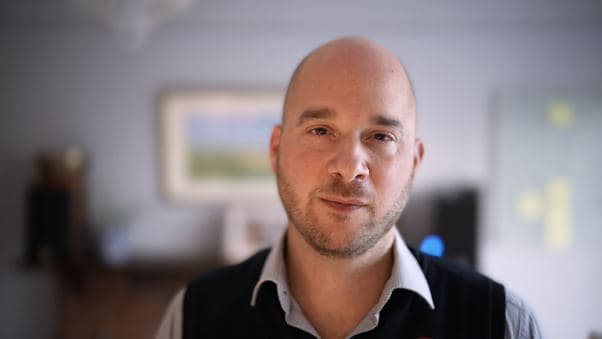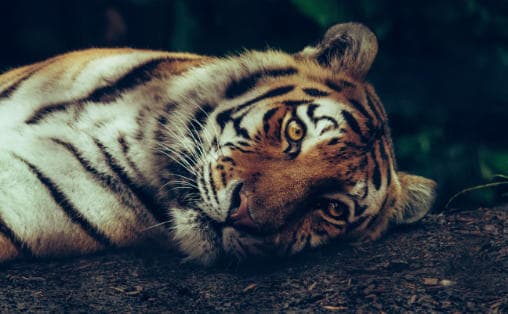Transcript
Welcome to another episode of Inside treasures by Phoebus. On the last episode, we talked about the art of forgiveness. It was about changing how we feel about someone about forgiving and letting go of negative emotions.
In summary, he was about feeling self love.
And from that point of self love to let go of negative emotions that are holding us back and allowing yourself to move forward with ourselves and with others. If you missed that episode, feel free to go back and listen to the art of forgiveness.
In this episode, we’re going to talk about how our feelings and emotions and thinking become part of our own internal reality.
Anything that comes within our awareness is a personal subjective experience. But then again, it becomes our world of reality. Our internal experience cannot be negated by anyone
who might be frantic or we might be pragmatic and realistic.
What we experience is what we experience. Whether that is love or fear, it doesn’t really matter. It’s 100%. real to us. The world we experience however real it is to us. It’s not always connected with the real world.
Trip to Guernsey
I remember years ago, when we had been with my wife on a trip to currency, and somehow we found ourselves to go on a boat ride. So it was a beautiful day The sun was shining, and went on the boat ride. Sea was beautiful. It was fairly warm. She was very pleasant to be out in the sea.
And then we returned back to the port.
And I noticed someone I know someone that got off the boat, and she was on crutches.
Now start to think somehow century by attention, what was it might have crutches. I had a look and I saw that suit was
She had been amputated. So it was missing it like. So she was using her crutches to walk. I immediately felt an urge an urge to walk a little bit faster and see.
How did she feel? How did she look? So I started walking a little bit faster. My wife is looking at me thinking, where are you going? I’m walking a little bit a pass her and her family. And then I turn around to pretend to look at my wife, but actually, I’m looking at her facial expressions. Is she happy? I wanted to know if she was happy, because in my internal experience, she was missing a leg.
And that could be something that I will feel could make me feel sad. But I was very surprised that simples happy.
Why wouldn’t she be happy? She has just been on a boat ride with the sun shining and the people who loved
characters internal experience was completely different from what I had expected.
But of course, would they expect a very sad person would spin on a boat ride with a people to love. And this is the show about our internal experience, our own personal internal experience, the way we experience the world.
To explain that, I’d like to share with you a model.
But because we have no visual right now, I’m going to try to explain this with words. And the model works in a sense of what we have as concentric circles. Now what is contrast concentric circles, where if you were to think about a target, shooting practicing target, you will see that there is a circle within a circle within a circle. So that’s what the concentric circle says. And the outside layers we have the world, the world around us, trees, the lakes, the pushes the rocks, the mountains, the hills.
What is what was the before we hear what is here since we’ve been here, so the houses and buildings, and everything that is out there, everything that composes our world, the sky, the earth, the moon, all those things that exist, whether we exist or not.
As we move in closer to that, we’ll see that we find ourselves
and around us, there are other people who experience themselves.
So we see that we are and the people around us, there’s you, there’s me, there’s your friend, there’s your wife is your husband, there’s other people who experience the world in a similar way, and others get closer to the model.
So we explained the outside world, what is out there. So we have the outside and then we have something we can call the inside how we experience the world. What is our internal experience
in between the two worlds, we have
A lens, a filter. This is how we see the world, and how things get filtered as the world is communicating to us. Now how do we perceive the external world, we all know that we’ve learned when we’re young, through our five senses, we taste we smell, we have sight, we have touch, we have hearing.
And that’s how the input comes into us.
Things are coming and traveling away while we’re listening or hearing or tasting. That’s how we perceive the world outside of us. That’s how we come in contact with the world. If I want to feel something, I can’t touch it and understand what it is. I can see a car coming. So I understand internally that I need to be careful through my experience..
So this is the way that our external senses are communicated into our internal world.
Next, we have sort of our internal senses. We make pictures in our mind
This is why we can see some of us more aware of some pictures are brighter and stronger than others.
But most of the time we’re creating pictures within our mind.
Then we have our internal dialogue. This is a listening thing. We can sometimes listen to our favorite music that we heard over and over and over again and just keeps coming back and playing within our mind. And we’re wondering, why is this coming back? Why is this coming back? Or we can speak in a positive tone towards ourselves. Or sometimes we can be really, really harsh and talk ourselves down.
So the main two are hearing and seeing, but it’s also how we feel which is more connected to touch. How do I feel what sensations Do I have within my body, when I’m happy to have different sensations that when I’m being sad or depressed, nothing explained the senses. I’m going to move into a different layer within our insane world. And that is the world of the thoughts and emotions. And those are usually made in our experience, through the senses, the internal senses that I explained how we feel, and how we think.
Usually we think in pictures and sounds and how we feel more on our emotions. This is another way to understand about emotions and thoughts and what it is that they’re doing. In our experience of our internal world. We have the internal setting. Now outside we had trees, we had lakes.
Now inside, we have emotions, we have thoughts, and the way we communicate with our emotions and our thoughts, the way we communicate with the world is so the senses, internal or external. And then I’m going to put a little parenthesis here that we also have our subconscious mind within ourselves, which is where all our memories are stored, our beliefs, our values, and we’re going to push that to the side, just something to have in the back of our minds.
And then in the very centre, we have the observer. The observer in some, in some literacy is being called like for Freud, he’s called it the super ego. You might hear it as the inner self as your core self as his higher self, all sorts of different names, but it’s who we are. In our core.
When everything is happening, the more close we are to the observer, the more we are observing what is, the more connected we are with ourselves. When we get lost into emotions into thoughts into our senses. A lot of times we lose sight of who we are.
So that’s a general model of how we experience the world. We have the outside world, we have our inner world with our emotions, our thoughts, our desires, we have ourselves observer, we also have a lens that acts as a filter between what comes in and what comes out.
And that is deeply connected with our beliefs and our values and how we see ourselves how perceive ourselves, our self worth. I’m sure if you were to have the diagram next to you, it’s gonna make your life a lot easier to actually understand the moral but I did my best to actually explain it as simple as possible.
Now, how does this relate to changing your reality? It just illustrates how we have a subjective reality that is very real to the one who’s experiencing it, but at times, it gets distorted. Now, whether we apply this model on positive experiences, or negative experiences, it doesn’t really matter. Because the model works in the same way.
But I want you to understand about what we like to label as negative emotions for me, it just makes it easier to address them. When we experience negative emotions. we disconnect from who we are. We disconnect from joy we disconnect from love. And we drive a wedge between our relationships whether that is
The relationship with ourselves or with the relationships with others, is a shoo in any emotion over and over and over for time and time on end. So you see, that’s our internal world, that sphere of perception of how we experience ourselves and the world.
And that goes from being healthy into toxic. And that’s why it gets to me. certain emotions that create an interference that disconnects us from the observer of who we are. There’s irritation, aggravation, annoyance, feeling anxious and worried about something, feeling resentment towards something or someone. envy, jealousy.
Those can disconnects us from other people that drive a wedge into our relationships. And the reason is because of our internal experience, and our lens gets distorted and then we can’t really communicate fully and flow with the world.
Some other emotions may also go through his example depression, we get self absorbed into a dull, internal clouded reality. And that is our world. And if I were to come and tell you, hey, cheer up the world is a beautiful place.
Because of your lens and your filter, and how you feel, it’s gonna be very hard to come in and wrong inside you. We get self absorbed in our own internal reality. Another example is feeling shame, fear, sadness, despair, grief, complaining, blaming.
These again, the create an interference about who we are our core about the world as it is about other people of who they are, and how they are. You see, when we create a true connection between observing and observer, I have a really strong connection between two people. But we have to be able to go through all the things that we’re feeling and thinking and make sure that all these are in line anyway.
Having negative experiences, then it’s really hard to have clear communication, true connection with others, and ourselves. Because like I said earlier, we can’t feel connected with who we are, then it’s very hard to connect with other people and who they are.
Do we have good connection with what we are doing necessarily connect with the other person while the other person might not be fully connected, but we’re more likely to understand them, we’re more likely to be compassionate, we’re more likely to be loving, we’re more likely to be caring and empathetic towards others. Our internal world can be disturbed, we can start to experience things we don’t really want to experience.
But we also find the key and whatever it is, that’s making us feel bad, we can flip it on its head and actually help ourselves feel good. And this is where I really get excited. This is the part where it’s I really want to share
But I always pick up that little bit of negativity, to get into that, because these are the things that get to us being happy and jolly and, and playful. We don’t really feel the need to change anything we, we don’t feel the need to analyse how we feel the world.
There’s no need for that, like, we are completely connected with the observer of who we are. We are deeply connected with other people. We’re having fun, we’re connected.
And is when we cross on the other side, when things affect us when things disturb us. When we begin to think what’s going on, we don’t question we don’t think when we are happy, we don’t say, Oh, I’m happy again. We’re actually really happy to be happy. But yet again, we find ourselves being sidetracked into different feelings and emotions, and want to get back to feeling good. So how do we use the same model to improve our intelligent experience?
We have to use again, our five senses. So whether it’s watching something fun, or putting some soothing music, something that consumes something that can be encouraging a loving internal voice, something that can support us. When we talk to ourselves, when we’re angry, we have an angry tone. And we’re loving and caring, we have a different tone. And we can share that time with ourselves.
We can speak to ourselves in a different way. How being happy and hopeful, in turn on images that things will work out, being optimistic about life, even benefits momentarily. It can shift the way we think it can shift the way we look at the world. We come down and bring down the volume. We bring down the volume of what’s happening outside of us. We bring down the volume or what’s happening within. We’re just toning it down a little bit when we tone it down. Although we might think oh now life is boring.
Actually, we can find peace. I can find stillness, we can find tranquility. And from that point of tranquility, of peace, we’re really in touch and in contact with ourselves. We can observe the world, we can experience the world fully, we can have a more positive experience.
To summarise what we talked about until now, the reason we suffer, it’s because we are off tune. We suffer because we experienced too many negative experiences that we internalise.
We don’t suffer when we’re happy when we live in joy enough.
Yet, we’re using the same system to experience both. When we change the quality of our thoughts and emotions. We change how we experience the world. And as a result, the quality of our life because what is a life other than a collection of internal experiences and presentations, whether those are.
The information that’s coming into internal recollection, or storing memories, or whatever that is, outside conditions might follow. But it’s not always necessarily that it will follow when we change the quality of our thoughts and emotions, things outside of us might begin to change, a law that depends on our own actions as well. But when we act from a place of feeling good about ourselves and the world, are much more capable, much more able of making changes.
Just sit there and wait for the world to change and make happy thoughts might not necessarily happen.
Well, why is this concept important? Because we will learn to control our internal experience, the quality of our life can improve drastically, our world becomes a brighter one, a lighter one, our internal one again, our relationships improve.
We’re in a healthier frame of mind our lens. Talking about earlier in the model, the filter gets adjusted, we create a more pleasant experience. Both the things are coming in the world around us, what we notice the things that we see within us and outside of us.
Is it more realistic? Is it more objective than the previous experience?
Like I said, No one can negate our own experience. But is it better? Maybe that we self did it? We did? Maybe. But what do you prefer? Do you prefer a pleasant life? Are your experiences a lighter, brighter? Or do you prefer a bitter, unpleasant full of suffering life?
I would say comparing the two just the new experience compare healthier one.
What do you choose to see in the world more of armed After World as both the good and the bad, our internal world has both the good and the bad. What do you want to see more of within you? And outside of here? In conclusion, now that we’ve understood the whole concept of the model, how we experience the world, the key is to build internal and external awareness.
What is going on outside of us? What is going on within us? And how do we communicate with the world between ourselves and the world and other people? How do things take place? mindfulness is something that can teach us to be an observer. Please share this podcast with anyone who you think might benefit.
Until next time, peace guide your life. Love guide your heart and guide your thoughts.




